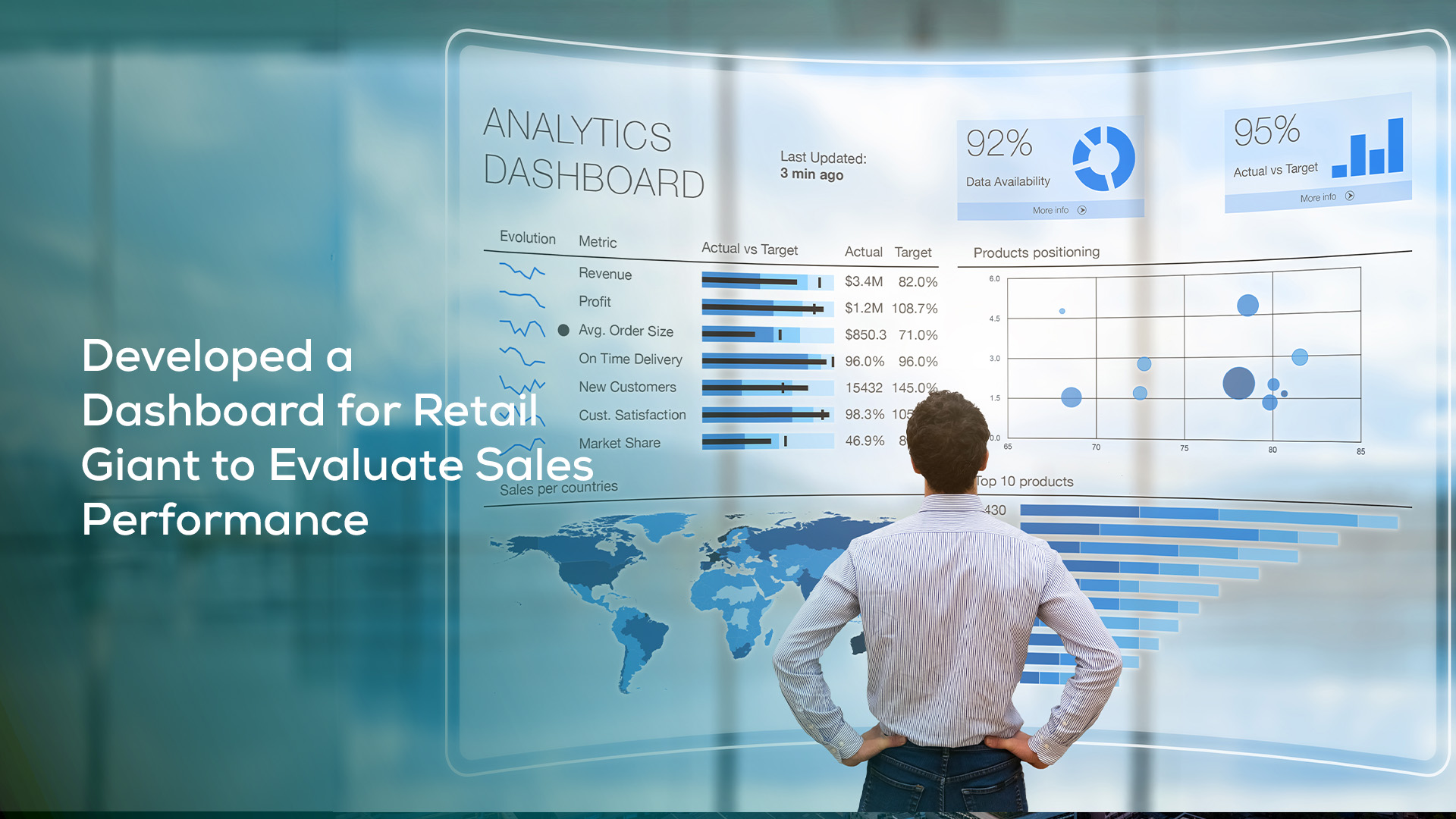

One of the largest retail and distribution giants in the GCC needed to develop a dashboard for evaluating the sales performance of various stores under the group. The client also sought a proper benchmark to assess the sales performance of their brand-new store. The client was utilizing an Excel-based heuristic process to measure sales performance, resulting in inefficient data mining and poor organizational visibility in each store. This made it challenging for them to identify top/underperforming areas and the underlying causes.
We collaborated with the client to develop an automated and comprehensive BI dashboard, depicting all key metrics to evaluate sales performance from organizational to category-brand level, in both existing and new stores. This would make it easier for the client to highlight top/underperforming areas and deep dive into those areas to decode the underlying causes.